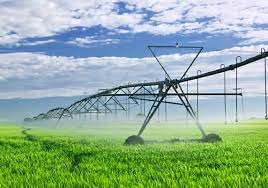Exploring Rural Development Through Agriculture

Rural development through agriculture is a multifaceted process that encompasses economic, social, and environmental dimensions aimed at improving the well-being, livelihoods, and resilience of rural communities. In this comprehensive analysis, we delve into the principles, strategies, challenges, and opportunities of rural development through agriculture, illuminating pathways towards sustainable, inclusive, and prosperous rural economies. Watch YouTube shorts on agriculture on my Channel
Understanding Rural Development Through Agriculture
Rural development through agriculture entails harnessing the potential of agriculture as a driver of economic growth, poverty reduction, and food security in rural areas. It involves promoting sustainable agricultural practices, enhancing value chain integration, and leveraging local resources and capacities to create employment opportunities, generate income, and improve living standards for rural populations.
Key Components of Rural Development Through Agriculture
Diversified Agriculture:
Promoting diversification of agricultural production, including crop cultivation, livestock farming, agroforestry, and aquaculture, enhances income stability, risk mitigation, and resilience to climate variability and market fluctuations.
Value Chain Development:
Strengthening agricultural value chains, market linkages, and agribusiness networks connects farmers to markets, improves access to inputs and technology, and creates opportunities for value addition, processing, and marketing of agricultural products. YouTube shorts on harvesting.
Infrastructure and Services:
Investing in rural infrastructure, such as roads, irrigation systems, storage facilities, and market infrastructure, enhances market access, reduces post-harvest losses, and facilitates trade and commerce in rural areas.
Strategies for Rural Development Through Agriculture
Rural development through agriculture requires integrated strategies and collaborative efforts across multiple sectors:
1. Sustainable Agricultural Practices
Conservation Agriculture:
Promoting conservation agriculture practices, such as minimum tillage, cover cropping, and crop rotation, improves soil health, water retention, and carbon sequestration, enhancing agricultural productivity and environmental sustainability.
Agroecology:
Embracing agroecological principles, biodiversity conservation, and ecological farming methods reduces reliance on synthetic inputs, enhances ecosystem resilience, and promotes biological diversity in agricultural landscapes.
2. Market Access and Value Addition
Market-Oriented Farming:
Encouraging market-oriented farming approaches, value chain development, and agro-processing initiatives enables farmers to produce high-value crops, meet quality standards, and capture greater value from their agricultural products.
Access to Finance:
Providing access to credit, microfinance, and financial services to smallholder farmers and rural entrepreneurs facilitates investment in productive assets, technology adoption, and business development in agriculture.
3. Rural Entrepreneurship and Innovation
Youth Engagement:
Empowering youth with vocational training, entrepreneurship education, and skills development programs in agriculture and agribusiness fosters innovation, job creation, and youth-led enterprise development in rural communities.
Technology Adoption:
Harnessing digital technologies, precision agriculture, and farm management tools enhances productivity, efficiency, and competitiveness in agriculture, empowering farmers to make data-driven decisions and optimize resource use.
Challenges and Considerations
Despite its potential, rural development through agriculture faces several challenges and considerations:
1. Access to Resources
Land Tenure:
Insecure land tenure, land fragmentation, and land conflicts limit farmers’ ability to invest in land improvements, access credit, and adopt long-term agricultural development strategies.
Water Scarcity:
Water scarcity, irrigation constraints, and competing demands for water resources pose challenges to sustainable water management, crop production, and livelihoods in rural areas.
2. Market Integration
Market Access:
Limited market access, inadequate infrastructure, and transportation bottlenecks impede farmers’ ability to reach distant markets, access price information, and capture value from their agricultural products.
Market Volatility:
Price volatility, market fluctuations, and commodity price risks expose farmers to income instability, production losses, and financial vulnerability, particularly in export-oriented and commodity-dependent economies.
3. Climate Change and Environmental Degradation
Climate Variability:
Climate change, extreme weather events, and unpredictable rainfall patterns exacerbate production risks, yield losses, and livelihood vulnerabilities for rural communities dependent on rainfed agriculture.
Natural Resource Degradation:
Land degradation, deforestation, and soil erosion undermine agricultural productivity, ecosystem services, and resilience to climate shocks, threatening food security and rural livelihoods.
Opportunities for Rural Development Through Agriculture
Despite the challenges, rural development through agriculture presents significant opportunities for transformative change:
1. Sustainable Food Systems
Food Security:
Strengthening food systems, promoting dietary diversity, and improving nutrition outcomes contribute to food security, health, and well-being for rural populations, particularly women, children, and vulnerable groups.
Local Food Systems:
Fostering local food systems, community-supported agriculture, and farmer’s markets enhances food sovereignty, supports small-scale producers, and reduces dependency on imported foods and agribusiness corporations.
2. Agri-Tourism and Rural Tourism
Rural Tourism:
Harnessing the potential of agri-tourism, eco-tourism, and rural tourism initiatives creates opportunities for income diversification, cultural exchange, and rural development, while preserving local heritage, traditions, and landscapes.
Farm Stay Programs:
Offering farm stay experiences, agritainment activities, and agro-educational tours provides visitors with hands-on learning opportunities, farm-to-table experiences, and authentic rural experiences that support local economies and promote sustainable tourism.
3. Social Innovation and Community Development
Community Empowerment:
Promoting participatory approaches, community-driven development, and social entrepreneurship empowers rural communities to identify their own priorities, mobilize local resources, and co-create solutions that address their unique needs and aspirations.
Women’s Economic Empowerment:
Investing in women’s economic empowerment, leadership development, and access to resources enhances gender equality, social inclusion, and community resilience in rural development initiatives.
Conclusion: Cultivating Prosperity, Sustaining Communities
Rural development through agriculture is a shared endeavor that requires collective action, innovation, and commitment from governments, civil society, the private sector, and rural communities themselves. By embracing sustainable agricultural practices, fostering market integration, and empowering rural stakeholders, we can cultivate resilient, inclusive, and prosperous rural economies that nourish people, preserve nature, and sustain livelihoods for generations to come. As we sow the seeds of progress and possibility in rural communities, let us cultivate a future where every individual, family, and community can thrive and flourish in harmony with nature and each other.



